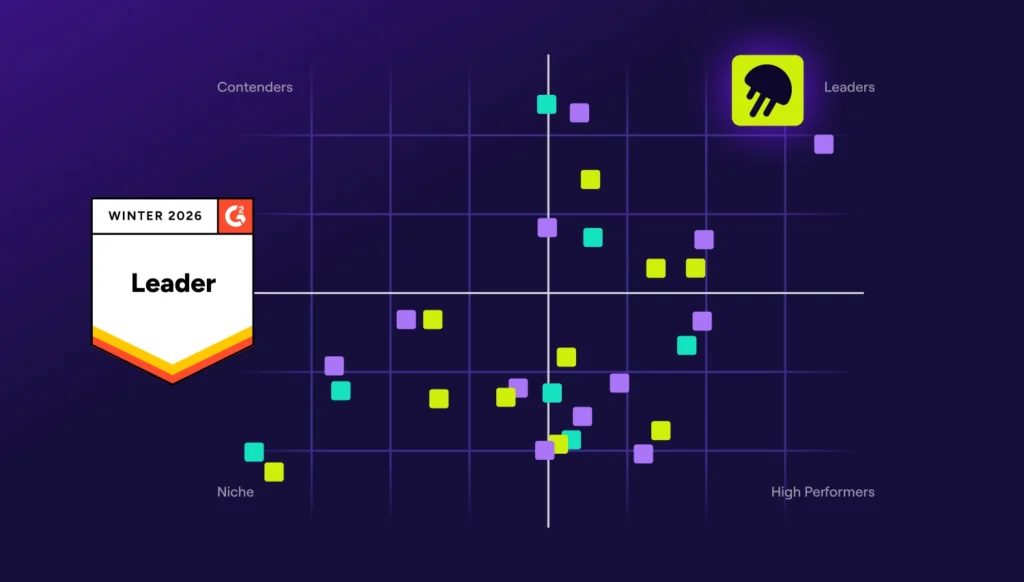One-on-one meetings with direct reports help Engineering Managers build strong relationships, improve team outcomes, and guide career development. And, if you’re managing a remote or hybrid team, the benefits are even greater. Regular one-on-one meetings can serve as a stand-in for the information managers used to gain from “walking the floor.”
But too often these meetings turn into status checks or, worse, a wasted 30 minutes. So how can engineering managers actually make the most of their one-on-one meetings? Here are five helpful tips from me – an engineering manager who’s been there and done it before.
Get personal
1. Get personal
Before diving into agenda items, take a few minutes to get to know your direct report on a human level. Ask about their weekend, ask a follow-up about something they mentioned last one-on-one (e.g. that concert they went to), ask about their family, pets, talk about the weather, sports – anything not related to work.
Engineers are more than just “resources” cranking out code, they’re people with lives outside of work. We spend long days and hours working together, and knowing a little something about the interests and passions of your team members makes working together more enjoyable, productive and positive for all.
Don’t make it a status meeting
2. Don’t make it a status meeting
There are plenty of ways for managers to get the status of work (standups, Jira, Sprint Reviews and demos, etc.), your one-on-one is not a place to talk about project status. This meeting is for you and your direct report to discuss information that you can’t get another way. Focus on their growth, concerns, and feedback.
There’s precious little one-on-one time spent with direct reports, don’t waste it on gathering information that is easily obtained elsewhere. Focus instead on gaining the context needed to interpret what is communicated via metrics and status checks.
Don’t be afraid to talk metrics
3. Don’t be afraid to talk metrics
Use metrics as a conversation starter. Be curious, not judgmental, use your one-on-one conversations to ask questions to provide the context needed to get a complete picture of how your direct report is doing. PR feedback, cycle time, features shipped, PR reviews, and documentation contributions are valuable metrics to help you objectively look at what’s happening and how you can help. Focus on trends to identify systemic issues, not one time data points.
Discussing metrics in one-on-ones can be valuable, but it also comes with challenges. Used well, metrics can help identify strengths and areas for improvement based on objective data, provide early detection of issues, and create opportunities to celebrate achievements. Used poorly, they can create anxiety and cause engineers to feel defensive. Remember, metrics don’t always tell the full story. Use your one-on-one to gain an understanding of the story behind the numbers.
Make it actionable
4. Make it actionable
To ensure productive one-on-one meetings, create a private agenda doc that is shared between the engineering manager and direct report only. As topics come up throughout the week, both parties should add them to the doc. Then during your one-on-one, use the document to write notes and track action items.
Have regular career conversations
5. Have regular career conversations
Regularly dedicate one-on-one meetings for career coaching. Is your direct report getting the opportunities they need to grow in their career? Are there upcoming projects or other opportunities they should be involved in? Are they making progress on the career goals that they have set? Have their career goals changed?
Having career coaching conversations once or even twice a year isn’t enough. If we need or want to make course corrections, that should happen throughout the year. Things change rapidly in software engineering organizations, we need to consider how changing situations affect careers more than just once or twice a year.
The one-on-one meetings between a manager and their direct reports are critical for building relationships, gaining a 360 degree view of each team member’s work, and how that work impacts the team and the organization, as well as providing a forum for feedback and continuous career development. Make the most of these meetings by keeping them on a regular, recurring schedule, and tracking agenda items, notes and action items.
Remember, ensuring that one-on-one meetings are productive and impactful is not solely the responsibility of the manager, individual contributors should bring their own agenda items to discuss and shouldn’t be afraid to ask their manager to adjust scheduling, length, or any other aspect of the meeting to fit their needs. The most important thing about any one-on-one is to have it!

Metrics can provide the basis for a good one-on-one meeting.
We’re working on a new tool to help! Sign up to learn more here.
Learn MoreAbout the author

Susan is a Software Engineering Manager at Jellyfish where she works to build





